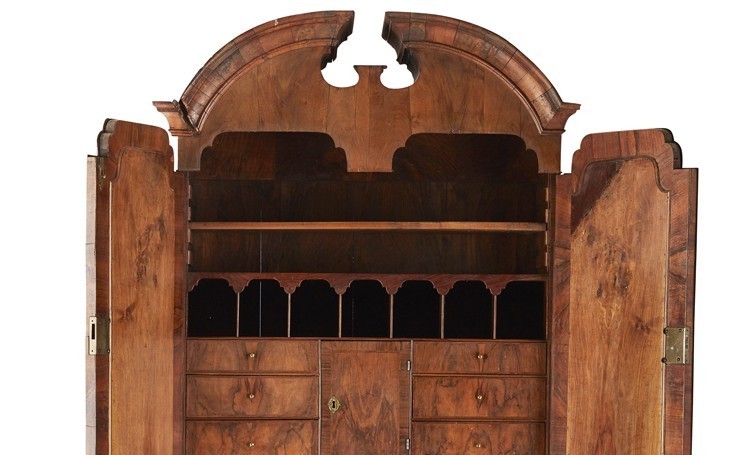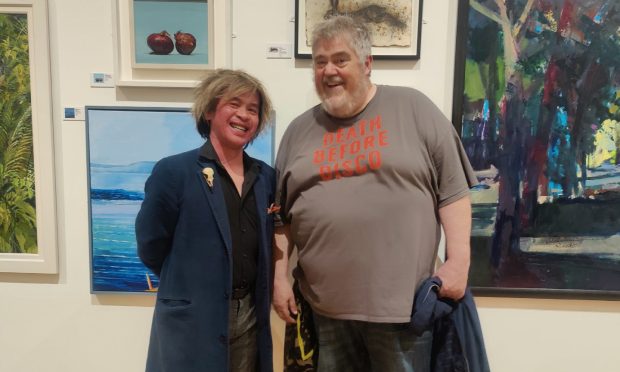The Courier carried details of Lyon & Turnbull’s recent antiques sale in Edinburgh due to its inclusion of contents from Ravensby Hall, Carnoustie.
From that sale I illustrate a fine George I bureau bookcase with its own story to tell.
Firstly, it is made of walnut, which reveals its early 18th century credentials. The age of walnut was really the quarter century either side of 1700 when, pre-mahogany, it was the wood of choice for the finest cabinetmakers. You probably won’t be able to see it in today’s illustration, but the bookcase is festooned with walnut’s tell-tale burrs and curls, taken from the weakest part of the tree.
And early Georgian society – around 1720 in the case of this bookcase – was characterised by an increase in literacy among the middle and upper classes. Consequently the cabinets which had graced the homes of the well-to-do in earlier periods quickly became dual-purpose pieces for storing writing materials and displaying precious books.
This is a fine example – and full of nooks and crannies to explore and enjoy. On its upper level it shows a broken-arch pediment above a pair of moulded, shaped panel doors opening to an interior packed with shelves and small drawers.
The lower part has a slant-front opening to pigeon holes, drawers and a baize writing surface.
Below that is a long drawer, a pair of short drawers and two further long drawers, all above bun feet typical of late 17th century style.
Five or ten years ago, I doubt if a bid of £5000 would have troubled the auctioneer. But with the bottom falling out of the ‘brown furniture’ market, it sold at Lyon & Turnbull for a modest £2125, inclusive of premium. What a bargain.
As for its history, the bookcase is said to have been ordered for Glamis Castle. It later belonged to Sir Robert Lorimer (1864-1929), the prominent Scottish architect and furniture designer, and was in the drawing room at Gibliston, his house near Kellie, in Fife.
Amongst Lorimer’s commissions were the renovations for Lennoxlove House as well as designs for several baronial houses across Scotland. Locally, perhaps he is best known for the mid-1920s’ remodelling of St John’s Kirk in Perth as the city’s memorial to the Great War dead.










